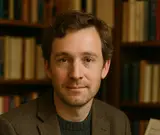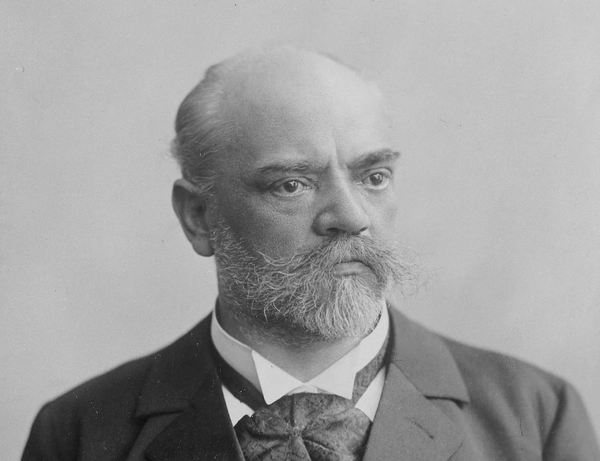Literary Inspirations in Classical Composition
From Beethoven’s 'Egmont' to Britten’s 'Peter Grimes', composers have long drawn on poets, novelists and dramatists to shape melody, form and emotion—proving that literature’s narrative power can be transmuted into the language of sound.

The relationship between literature and music is intimate and centuries‑old. From the earliest operatic libretti to the tone poems of the late Romantic period, composers have looked to poets, novelists and dramatists for inspiration, narrative structure and characterisation. Literature offers a rich treasury of stories, images and philosophical ideas that composers transmute into musical language—so that a line of verse becomes a soaring melody, a dramatic scene takes on orchestral colour, and the very atmosphere of a poem is captured in harmony and rhythm. In this article, we explore some of the most compelling examples of literature’s influence on classical composers, from the Classical era through to the twentieth century, and consider why the union of text and music continues to resonate so powerfully.
Early Encounters
Even in the Baroque era, composers were setting texts to music—but it was in the Classical period that we begin to see literature shaping purely instrumental works. Joseph Haydn’s oratorios, for instance, draw upon Biblical texts, yet it was Ludwig van Beethoven who first looked to a dramatic play for a symphonic overture: his Egmont Overture (Op. 84) of 1810, inspired by Goethe’s tragedy of political oppression, foreshadows the Romantic tone poem by suggesting a literary narrative within the symphonic form.
Beethoven understood the power of Goethe’s characters and situations well enough to sketch them in bold orchestral strokes: the ominous opening hints at tyranny, while the triumph of the peasants at the close conveys the spirit of revolt. In this way, literature did not merely supply a title; it provided a structural blueprint and emotional compass.
Schumann, Berlioz and the Novelistic Symphony
The Romantic era saw literature and music fuse ever more closely. Robert Schumann, originally intent on a literary career, frequently drew on the poetry of Heinrich Heine, Joseph von Eichendorff and Friedrich Rückert. His song cycles—Dichterliebe (Op. 48) set to Heine, and Myrthen (Op. 25) with texts by various poets—transform intimate verse into a sequence of musical tableaux, each song exploring different facets of love, longing and loss.
Meanwhile, Hector Berlioz created perhaps the first truly novelistic symphony with his Symphonie fantastique (1830). Though not based on a pre‑existing text, Berlioz himself penned a detailed programme—an invented autobiographical tale of unrequited love, opium‑induced visions and a witches’ sabbath. The programme booklet guided listeners through each movement, offering a narrative spine far more elaborate than any instrumental work to date. Here literature and music coalesce: Berlioz’s own prose breaths story into notes, demonstrating that a composer’s imagination could rival that of a novelist.
Liszt, Strauss and the Poetic Model
Franz Liszt popularised the term “programme music” and wrote numerous tone poems—single‑movement orchestral works based on literary or pictorial ideas. His Les Préludes (1854) is said to reflect Alphonse de Lamartine’s meditative poem on life’s stages, while Hamlet and Orpheus look respectively to Shakespeare and Greek myth as filtered through contemporary imagination.
Richard Strauss took the tone poem to its zenith. His colossal Also sprach Zarathustra (1896) borrows not musical themes but philosophical concepts from Nietzsche’s book of the same name. Strauss himself admitted that only the “eternal problem of existence” fascinated him, and Nietzsche’s aphoristic text about humanity’s self‑overcoming inspired the work’s majestic opening fanfare and ever‑evolving musical narrative.
Strauss’s later tone poems—Don Juan, Ein Heldenleben, Till Eulenspiegel’s Merry Pranks—draw upon Byron, his own past and folk legends. Each is almost operatic in its dramatic shape, showing how literature can provide both character studies and action‑driven arcs, even in purely instrumental form.
Verdi, Wagner and the Adaptation of Drama
No discussion of literature’s influence on music is complete without opera. Giuseppe Verdi’s collaboration with librettists such as Francesco Maria Piave and Arrigo Boito resulted in operas based on Shakespeare (Macbeth, Otello, Falstaff) and Victor Hugo (Rigoletto, from Le Roi s’amuse). Verdi recognised the dramatic potential of these works: Shakespeare’s complex characters and moral ambiguity allowed him to delve deeper into psychological realism than earlier operas.
Richard Wagner went further still, writing his own libretti—mythic dramas such as Der Ring des Nibelungen and Tristan und Isolde that blend Norse sagas, medieval romance and philosophical ideas drawn from Schopenhauer. Wagner’s notion of the Gesamtkunstwerk, or “total work of art,” saw text, music, staging and visual design as inseparable. His operas are less literal adaptations and more personal reinterpretations, yet the literary sources remain essential scaffolding for his vast imaginative worlds.
Debussy, Ravel and the Poets
In the early twentieth century, French composers turned to Symbolist and Impressionist poets for inspiration. Claude Debussy’s song cycle Ariettes oubliées (1885–87), set to Paul Verlaine, captures the elusive moods and suggestive images of Symbolist verse through fluid harmonies and delicate orchestration.
Debussy’s orchestral work Prélude à l’après‑midi d’un faune (1894) is famously based on Stéphane Mallarmé’s poem of a daydreaming nymph and a faun. Rather than retelling the poem’s events, Debussy evokes its sensual atmosphere, using flute solos and chromatic harmony to conjure the languorous heat of an afternoon in Arcadia.
Maurice Ravel, too, looked to literature: his piano trio Ma mère l’Oye (1908–11) reimagines fairy‑tale vignettes by Charles Perrault and the Brothers Grimm, while his opera‑ballet L’Heure espagnole (1907) draws on a one‑act comedy by Franc-Nohain. In both cases, the composer distils narrative charm and wit, mirroring literary tone through his characteristic precision and clarity.
Britten, Stravinsky and Beyond
Benjamin Britten revitalised literary settings in mid‑century England. His Peter Grimes (1945), based loosely on the poem by George Crabbe, explores the tragic psychology of its protagonist through arias that echo Crabbe’s stanzas and village description. Britten’s later song cycles—Les Illuminations (1940) on Rimbaud, Serenade for Tenor, Horn and Strings (1943) to English poems—demonstrate his gift for matching text with musical form, whether lively prose or elegiac verse.
Igor Stravinsky initially collaborated with Diaghilev on ballet scores, often inspired by folk tales and literature—from the Russian Petrushka to Shakespeare’s The Rake’s Progress. His Neoclassical phase yielded Pulcinella (1920), drawn from an eighteenth‑century play once attributed to Pergolesi. Though Stravinsky reinterprets Pergolesi’s music rather than its libretto, the theatrical context remains crucial.
Even late-century modernists like Olivier Messiaen found rich literary sources: his Oiseaux exotiques (1956) quotes texts on birdsong, while his opera Saint François d’Assise (1975–83) reflects Thomas of Celano’s hagiography. Literature thus remains a continuing wellspring, adapting to every stylistic trend.
Why Literature Inspires Music
What makes literature such fertile ground for composers? Firstly, narrative and character provide a ready‑made structure: movements or sections can correspond to scenes or emotional states. Secondly, the emotional content of a poem or story—love, heroism, despair—resonates with music’s own expressive power. Thirdly, the imaginative imagery of verse offers vivid colours and moods that composers translate into harmony, orchestration and rhythm.
Moreover, literature often conveys ideas that music alone cannot articulate in words: political resistance in Goethe, the subconscious in Mallarmé, moral ambiguity in Shakespeare. By engaging with literary themes, composers enter into an inter‑art dialogue, where text and music enrich each other, creating works of lasting depth.





